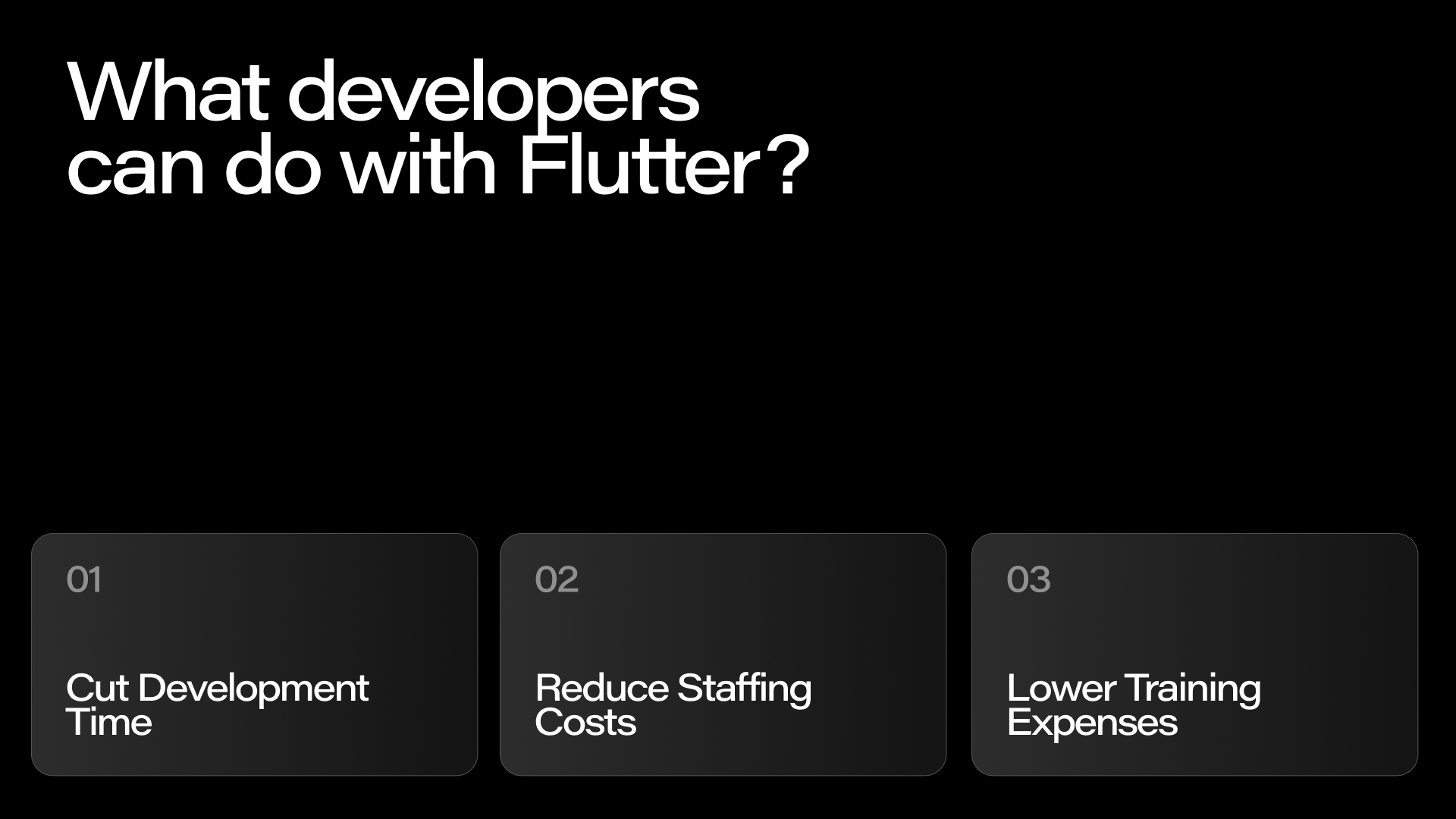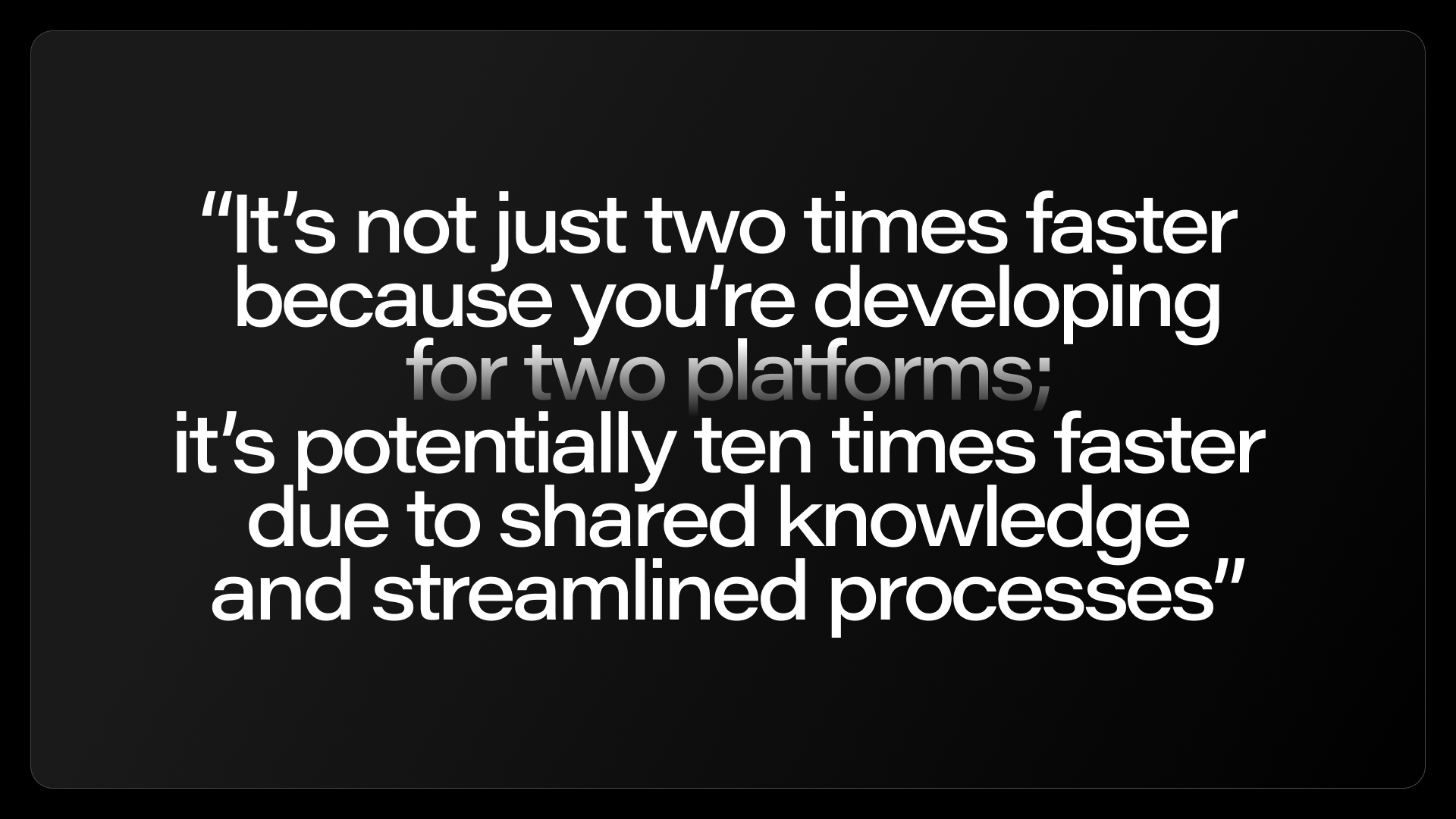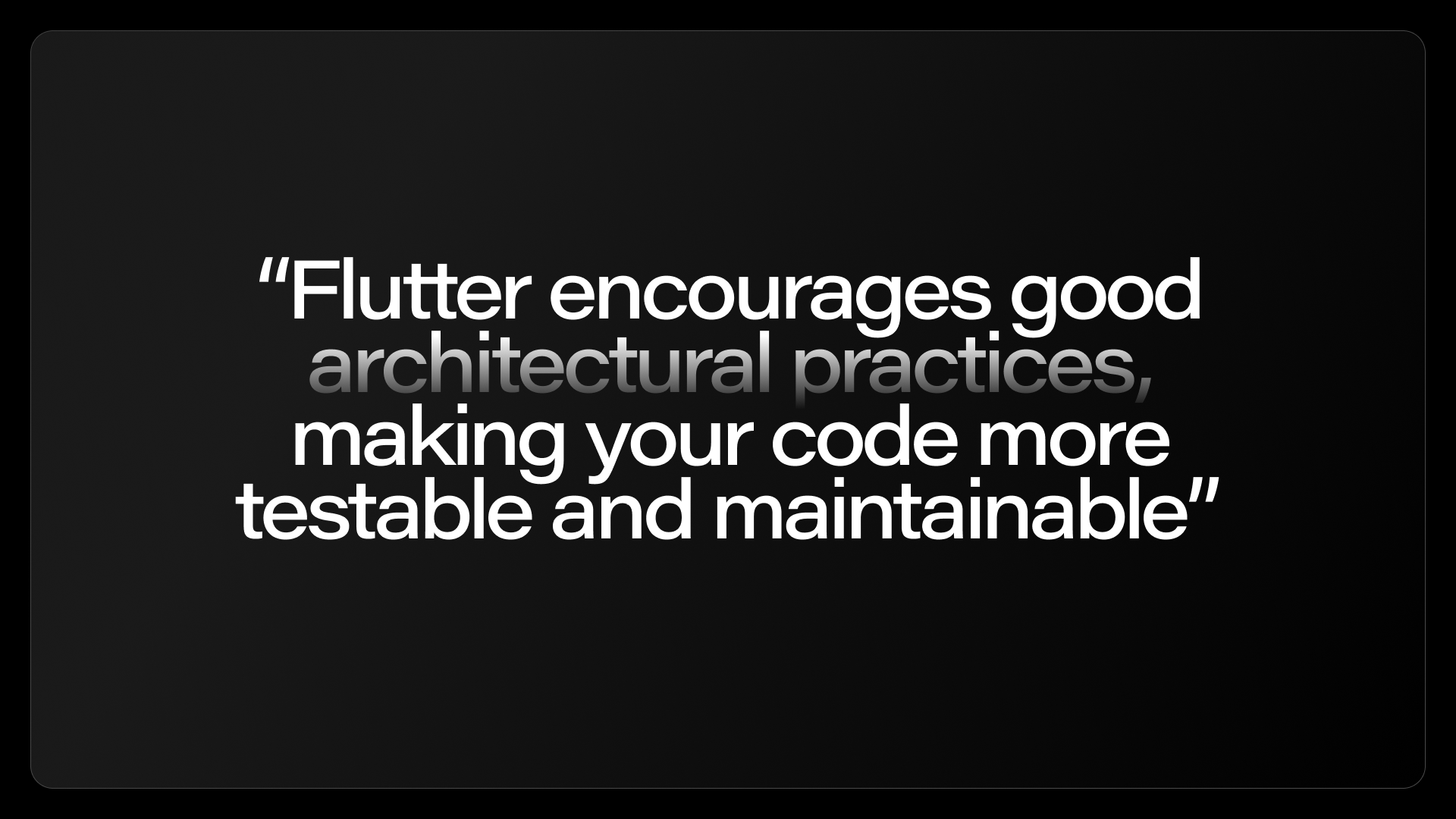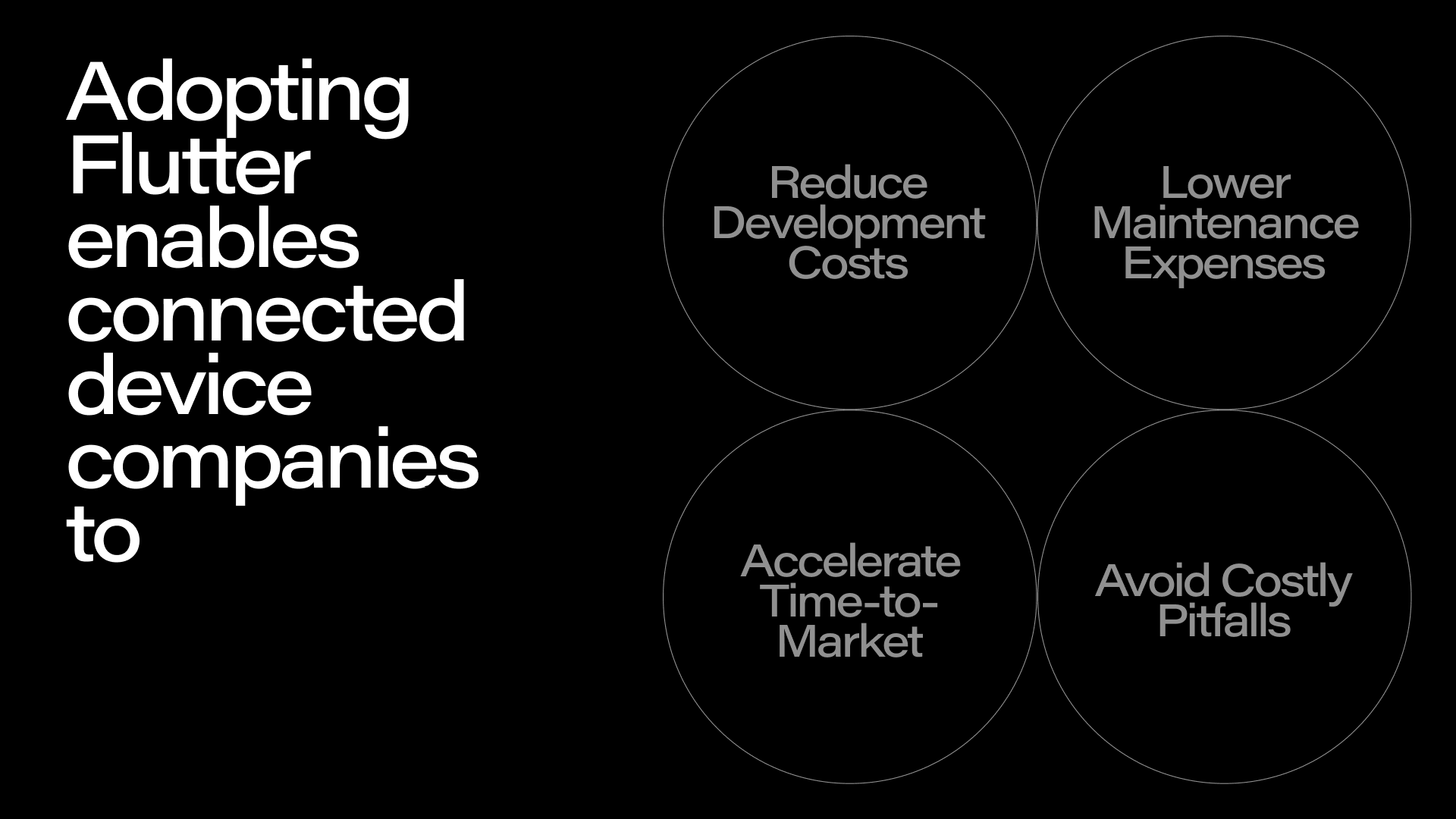Imagine overseeing a health tracker app spread across multiple platforms, saddled with a tangled codebase after years of piecemeal updates and shifting development teams. Outdated technology turns every new feature into a slow and costly undertaking, and maintaining consistency feels like an uphill battle. Now, enter Flutter — a modern framework that streamlines development with a single codebase for all platforms. It simplifies processes, cuts costs significantly, and ensures a seamless user experience. With Flutter, you can leave behind the headaches of legacy systems and focus on delivering value to your users without breaking the bank.
At Intent, we’ve faced this exact challenge with our clients in the connected device industry. The complexity of IoT projects often extends beyond hardware and firmware; the software side can become a labyrinth of platform-specific code, leading to ballooning costs in both development and maintenance. That’s when we turned to Flutter, Google’s open-source UI toolkit that promised not only a single codebase for multiple platforms but also a significant reduction in development and maintenance costs.
We sat down with Grzegorz Miszewski, a senior mobile engineer who led our transition to Flutter in IoT projects. His firsthand experience revealed how Flutter is not just a tool for traditional app development but a cost-saving powerhouse in the IoT space. From unifying our development process to enhancing our ability to work with complex protocols like Bluetooth LE, Flutter has been a game-changer in reducing both build time and ongoing maintenance expenses.
In this article, we’ll dive deep into how Flutter addresses the financial pain points of IoT development. We’ll explore the cost-saving benefits, share concrete examples from our projects, and discuss why it might just be the solution you’ve been searching for to keep your budget in check. Whether you’re a software engineer wrestling with cross-platform challenges, a Bluetooth specialist dealing with connectivity issues, or a stakeholder looking to streamline development and reduce costs, this piece offers valuable insights grounded in real-world experience.
Let’s unravel how Flutter is reshaping the landscape of IoT application development by significantly cutting costs and simplifying maintenance.
Unified Codebase: Reducing Development Costs
In IoT projects, managing separate codebases for different platforms can quickly escalate costs. Each platform requires its own development team, testing protocols, and maintenance schedules, doubling — or even tripling — your expenses.
Grzegorz emphasized:
“Having one single codebase means you write the code once, and it runs seamlessly on both Android and iOS. This is crucial in IoT projects where consistency and cost-efficiency are paramount.”
With Flutter, developers can:
Cut Development Time
A single codebase reduces the total development time compared to writing separate native apps for each platform.
Reduce Staffing Costs
Fewer developers are needed since one team can work across all platforms.
Lower Training Expenses
Team members only need to learn one language (Dart) and one framework, reducing the time and cost associated with training. This also positively impacts the internal recruitment process.

Case Study: Cost Savings in Action
In one of our projects, we developed an IoT application for a wearable device. Using native development, the estimated time to market was 12 months with separate teams for Android and iOS. By adopting Flutter, we reduced the development time to 7 months and cut the development team size by 30%, resulting in significant cost savings.
Accelerated Development with Knowledge Sharing
Beyond the unified codebase, Flutter enhances team efficiency, which directly impacts costs. Grzegorz pointed out: "It’s not just two times faster because you’re developing for two platforms; it’s potentially ten times faster due to shared knowledge and streamlined processes".

Benefits include:
Faster Iterations
Rapid development cycles mean you can bring products to market quicker, reducing opportunity costs.
Efficient Collaboration
With everyone on the same page, less time is spent on coordination and more on productive development.
Simplified Maintenance
Updates and bug fixes are applied once, reducing the long-term costs associated with maintaining multiple codebases.
Hot Reload: Minimizing Development Downtime
Every minute a developer waits for code to compile or an app to restart is a minute of lost productivity — and money.
Flutter’s Hot Reload feature addresses this. “With Hot Reload, you don’t need to recompile or reconnect to your device every time you make a change. It saves significant time and keeps the development flow uninterrupted.”
Why This Saves Money in IoT Development
Increased Developer Productivity
Developers can implement and test changes faster, reducing billable hours.
Lower Testing Costs
Immediate feedback reduces the time spent on testing cycles.
Faster Debugging
Quick identification and resolution of issues prevent costly delays.
Robust Support for IoT Protocols: Saving on Integration Costs
Integrating IoT protocols can be complex and expensive, especially if you need to develop custom solutions. Flutter simplifies this:
Bluetooth LE (BLE)
Ready-Made Libraries
Libraries like Flutter Blue and Flutter Reactive BLE reduce the time and cost associated with developing custom Bluetooth solutions.
Community Support
A strong community means faster problem resolution without expensive consultations.
“The big players in IoT are already leveraging Flutter’s capabilities. The libraries are mature, and the community support is strong,”
noted Grzegorz.
Wi-Fi, HTTP, MQTT
Seamless Integration
Built-in support for essential IoT protocols means less time (and money) spent on developing custom integrations.
Reduced Licensing Costs
Open-source libraries eliminate the need for expensive third-party licenses.
Integration with Cloud Services: Reducing Backend Costs
Cloud services are essential but can add to your expenses. Flutter offers cost-effective integration options:
Firebase Support
Free and scalable solutions for authentication, databases, and more reduce backend development costs.
Third-Party Services
Easy integration with other cloud providers allows you to choose cost-effective solutions that fit your budget.
“With Flutter’s integration capabilities, connecting your IoT app to cloud services is straightforward, allowing for features like real-time updates and remote device management without hefty development costs,”
Grzegorz shared.
Security: Avoiding Costly Breaches
Security breaches can be financially devastating. Flutter helps mitigate this risk:
Built-In Security Features
Secure communication protocols are readily available, reducing the cost of implementing security measures.
Proven Reliability
Trusted by financial apps like Google Pay, reducing the risk of costly vulnerabilities.
“If Google trusts Flutter for handling payments with Google Pay, it’s a strong testament to its security capabilities. That means less money spent on security audits and fixes.”
— Grzegorz emphasized.
Comprehensive Testing Tools: Lowering QA Expenses
Testing can consume a significant portion of your budget. Flutter’s testing capabilities help reduce these costs:
Automated Testing
Built-in support for unit, widget, and integration testing reduces manual testing efforts.
Faster QA Cycles
Quick iterations and reliable testing tools mean less time (and money) spent on quality assurance.

Access to Device Sensors: No Need for Custom Development
Accessing device sensors can be a costly endeavor if custom code is required. Flutter offers:
Pre-built Libraries
Access to a wide range of sensors without additional development costs.
Community Support
Active maintenance ensures compatibility with new devices, saving future upgrade costs.
The added benefit is that, depending on the needs, there is still a possibility of developing a native bridge or using dart:ffi and dart:jni to leverage native code on demand.
Thriving Community and Ecosystem: Free Resources and Support
A strong community means you can solve problems without expensive consultants:
Open Source Contributions
Benefit from community-developed libraries and tools at no extra cost.
Peer Support
Forums and community channels provide free assistance, reducing the need for paid support.
“The Flutter community is big and growing. There are libraries for almost everything you need, and the support is fantastic,”
said Grzegorz.
Flutter vs. React Native and Native Development: A Cost Comparison
When considering the financial aspects, Flutter stands out:
Lower Development Costs
Compared to native development, Flutter can reduce costs by 50% or more due to the single codebase.
Less Maintenance Overhead
Fewer platforms to support mean ongoing maintenance is cheaper.
Better Performance than React Native
Flutter’s performance can lead to lower hardware requirements, saving costs on device compatibility.
“For IoT development, Flutter is my go-to choice. It simplifies the process and significantly reduces both development and maintenance costs compared to other platforms.”
— Grzegorz concluded.
Conclusion
Flutter offers a powerful, efficient, and cost-effective platform for developing IoT applications.

By adopting Flutter, connected device companies can:
Reduce Development Costs
Save money with a single codebase and faster development cycles.
Lower Maintenance Expenses
Simplify updates and bug fixes across all platforms.
Accelerate Time-to-Market
Faster development means quicker revenue generation.
Avoid Costly Pitfalls
Built-in security and robust testing tools help prevent expensive issues down the line.
Ready to cut costs and streamline your IoT development process? At Intent, we’re experts in leveraging Flutter to deliver high-quality, cost-effective solutions for connected devices. Contact us to learn how we can help you save money and deliver exceptional value to your users.

Peter Tuszynski
CTO

